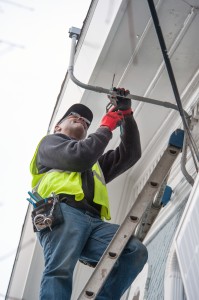Three key questions in Michigan’s energy debate
The Senate Energy and Technology Committee continues to deliberate on a package of bills that lay out a misguided approach to Michigan’s energy future—one that would suspend Michigan’s transition to cleaner energy sources, lead to major rate increases for Michigan families and throw a wrench in economic development in our state.
During three weeks of hearings on the bills last summer, strong opposition from MEC and many other groups made it clear that Senate Bills 437 and 438, as introduced, did not have the support to move forward. Bill sponsors Sens. Mike Nofs and John Proos went back to the drawing board, and introduced substitute versions of the bills in late April.
Nofs, who chairs the committee, recently announced he had the votes lined up, but he now appears to again be working on new drafts. Such a broad range of groups have voiced opposition—environmental groups, energy efficiency contractors, major corporations (including Steelcase, Whirlpool, Johnson Controls and others) and even the conservative group Americans for Prosperity—that it’s hard to imagine the bills moving out of committee without significant revisions. Similar bills cleared a House committee last fall but have languished on the House floor.
Throughout this process, the issue of “electric choice” has been a major point of debate. (The term refers to the 10 percent of the state’s electric load allowed to come from alternative electric suppliers, rather than from utilities.) That small slice of the energy pie has dominated much of the discussion and disagreement between major industrial facilities and the utilities.
While energy choice is an important issue, the debate should not lose sight of the other 90 percent of our energy. The focus there should be on answering three basic questions: How do we generate electricity? Who gets to generate it? And how much should we generate?
How do we generate it?
The case for making renewable energy Michigan’s go-to source of electricity is growing stronger all the time. For example:
- The latest Michigan Public Service Commission update on the state’s renewable energy programs found that wind energy now costs less than half as much as it did in 2009. More importantly, it costs less than any other new generation built today.
- The MPSC also reported that more than $2.9 billion has been invested in renewable energy projects in Michigan since 2008, helping to diversify Michigan’s economy.
- Michigan’s clean energy sector supports 87,000 jobs, according to a recent report.
Even setting aside jobs and investment—and the huge cost savings from the avoided health impacts of air pollution—it’s clear that renewable energy sources offer the best bang for the buck. And yet, the current legislation proposes eliminating the state’s renewable energy standard.
Michigan’s electric utilities and supportive legislators have often claimed we don’t need a renewable energy standard, like the current one which required them to generate 10 percent of their electricity from renewable sources. The companies say they’ll invest in more renewable sources as costs come down. So, with wind and solar at record-low prices, the utilities must be buying up clean power like crazy, right?
Wrong. DTE Energy has told shareholders it will develop 100 megawatts of wind power in 2019, but that will result in a minuscule .2 percent increase in renewable energy per year. Similarly, Consumers Energy’s plans for three new, 100-megawatt wind farms over the next decade will only increase its renewable portfolio by .25 percent annually (in contrast to the nearly 1.5 percent per year they built to reach the 10 percent renewable standard).
That’s why MEC and a growing portion of the business sector are advocating for including language in the legislation to set a clear expectation that utilities will continue to transition to clean energy sources. We have proposed language clarifying that, if renewable energy prices exceed the cost of building and operating new natural gas combined-cycle power plants, the utility’s obligation to invest in renewables would cease. MEC is encouraging legislators to approve the next phase of clean energy by increasing our current 10 percent standard by 1.5 percent each year from 2017 through 2022. Read more
















